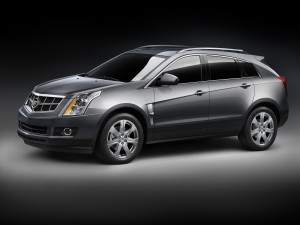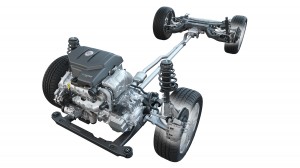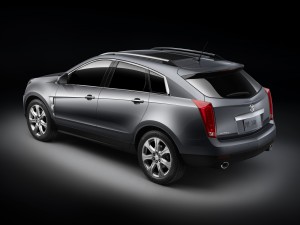
The Cadillac SRX looks to be a solid entry in a competitive, and declining segment.
Of all the nonsensical opinions held by enthusiast writers, none is more pervasive or wrong headed than the proposition that luxury vehicles have to be rear-wheel drive. The Lexus RX series, built from the Camry no less, demolished that assertion a decade ago. Not only did the RX300 catapult Lexus to the number one sales spot in the U.S. luxury segment, where it still resides, but it ended the reign of body-on-frame, rear-drive trucks as the basis for luxury vehicles. And Lexus had customer satisfaction and quality levels that embarrassed German and American makers. It still does.
Cadillac, once the uncontested U.S. luxury vehicle leader, is coming off a disastrous rear-drive SRX model built from an aging platform. It’s finally seeing things the way Lexus envisioned. The next-generation 2010 SRX crossover is built from a GM front-wheel-drive architecture that promises relative efficiency in a mid-size package for five adults.
Two V6 engine choices, and front- or all-wheel-drive, allow customers to decide what is best for them. And if previous experience on changing from a rear-drive to a front-drive platform holds, significant fuel economy increases are possible.
Unfortunately, this is still an overweight vehicle at more than 4200 pounds and higher, depending on equipment. My experience in this class says that 18 mpg is as good as it gets. And this requires driving finesse. Still, in the oft misunderstood area of fuel economy, replacing 12-14 mpg vehicles with 20 mpg ones provides a significant benefit for all of us.
A new, 3.0-liter, direct fuel injection V-6 engine is standard, and a new, 2.8-liter turbocharged V-6 is optional. Fuel economy in the mid-20s on the highway is projected, but this awaits the application of an EPA window sticker when testing is complete, not a press release assertion. It’s true, these are the smallest-displacement engines Cadillac offers in North America, but outputs of 265 and 300 horsepower, respectively, and 223 and 295 lb. ft. of torque will suffice. Let the horsepower-obsessed buff book wailings begin.
The Hydra-Matic six-speed automatic transmission helps save fuel by lowering the engine speed at constant highway speeds. A manual shift control enables greater driver participation when he is not distracted by cell phone use. The SRX also includes a driver-selectable “eco mode” that alters transmission shift points to maximize fuel economy.

The sophisticated all-wheel-drive system, requisite for SUV marketing, is unneeded for most drivers.
The active, on-demand all-wheel-drive-system includes an electronic, limited-slip differential that distributes torque as needed from side-to-side along the rear axle, and from the front axle to the rear axle.
However, a fresh set of all-season tires or, better yet, four snow tires on the front-drive version will suffice for almost all drivers. The sophisticated system adds weight and complexity, and hurts fuel economy. Eighteen-inch wheels are standard and 20-inch wheels are available.

Cadillac cues have been successfully applied to a theme Lexus established a decade ago.
Outside the SRX continues the emulate Lexus theme with a good stance, minimal overhangs, and an integrated spoiler on the rearward edge of the roof. Cadillac claims it advanced the “Art and Science” design to create a crossover with “a dramatic diving gesture on the body side to impart the feeling of movement, even at rest” — about what every other styling department claims.
However, the much more radical looking Infiniti FX hasn’t been a sales success. And even the Lexus RX350 suffered a stunning 20% sales decline to about 80,000 units last year. Cadillac will have to fight its way into this segment, where Acura and BMW are also active, customer by scarce customer. A more radical look would detract, as it did from the previous SRX.
Inside are the requisite luxury materials and gimmicks. Cadillac script logos in the front door sill plates illuminate when the doors are opened. Standard are front air bags; head curtain side air bags; front seat-mounted pelvic/thorax side air bags; front safety belts with dual pre-tensioners and load limiters; and rollover mitigation sensors. Enough explosive devices to, well, never mind.
Production begins this summer. The old model was listed in the $41,000 to $48,000 range, before generous and, as it turns out company threatening, rebates and lease terms were applied.
